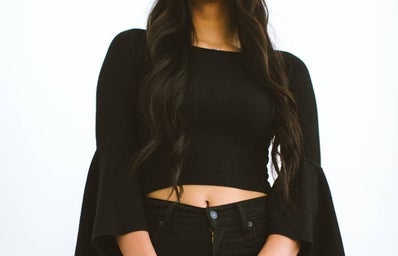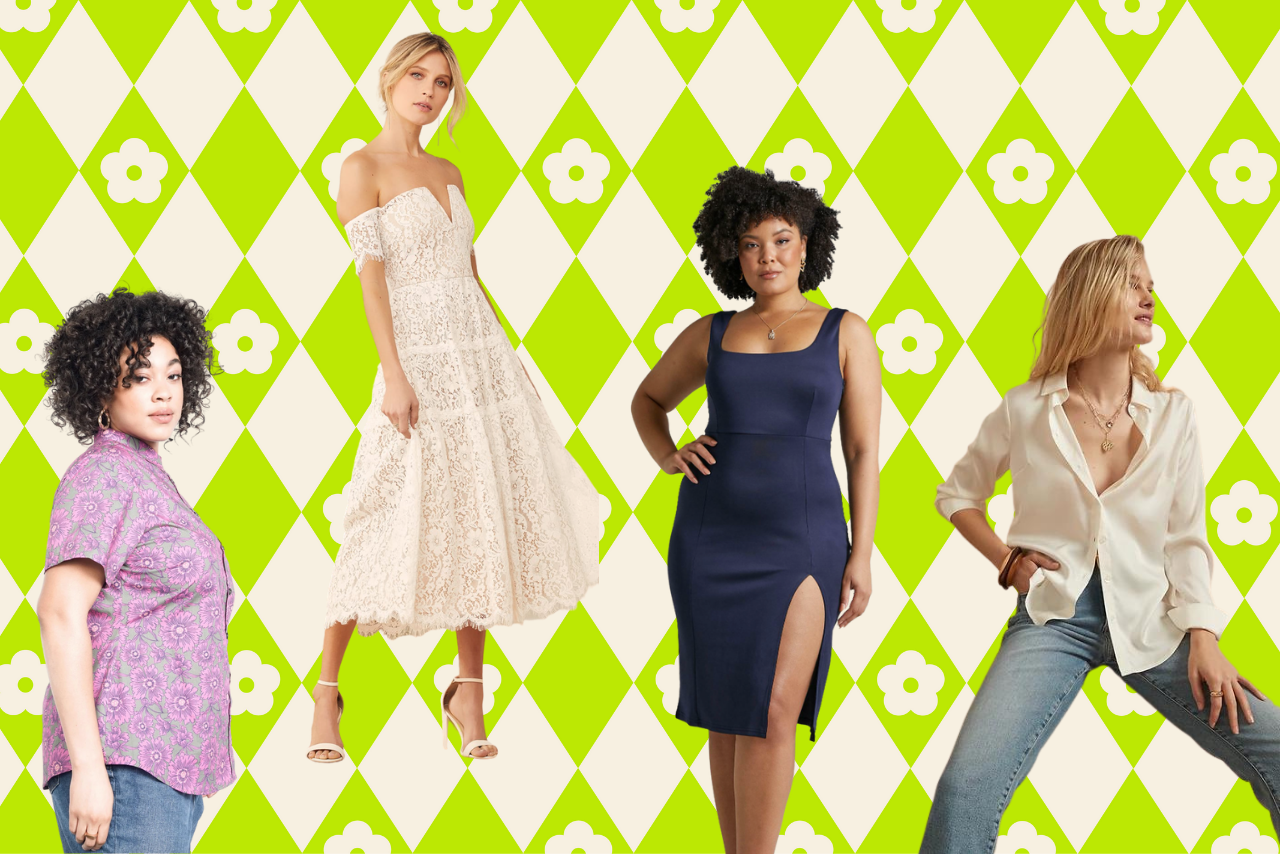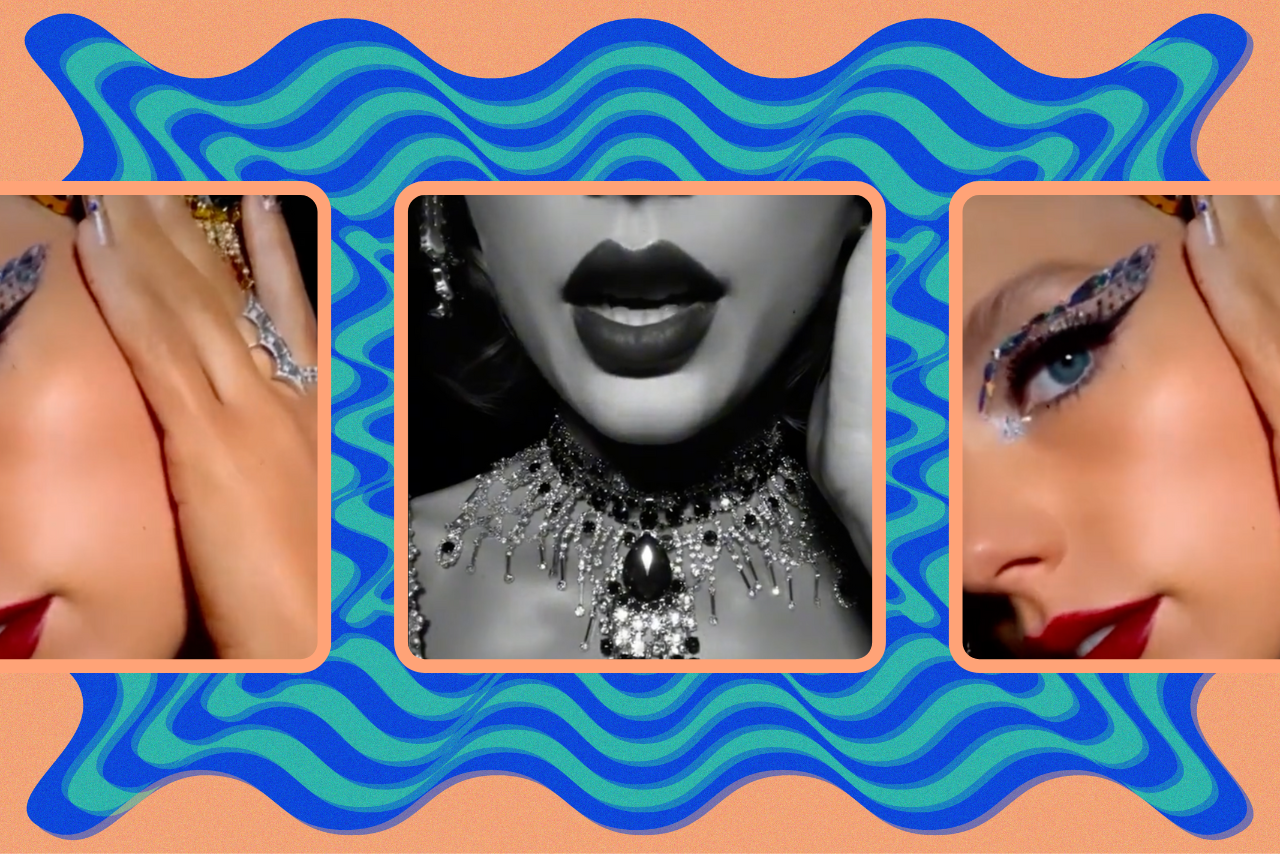“What are you wearing?”
My mom had long ago given up trying to dictate my fashion choices — years of wearing Christmas dresses to summer barbecues and jean shorts over leggings had shown her that I was fiercely independent when it came to my wardrobe — but today had crossed a line. We were driving to school, running slightly late as usual, when she caught a glimpse of my outfit and her eyebrows rocketed up in obvious dismay. “Auden, you cannot wear that to school. That is not enough clothing.”
I looked down at my hot pink lingerie top, black jean shorts, and skull choker and combat boots. After four years of Catholic all-girls school, I was sick of uniform skirts and oxford blouses. I wanted to dress like the real me, who apparently resembled a Hot Topic alt-girl circa 2003. “It’s hot outside,” I said defensively. “Plus this is how I feel today.”
“That’s how you feel?” My mom was close to exploding. Lately, my wardrobe had consisted of chokers, thick eye makeup, and other accessories she wasn’t a fan of, but this was next level. She swerved the car around. “You’ve gotta go home and change.”
For my mom, everything about this outfit was a red flag. The hot pink screamed mental distress, the choker was a sign of impending death (“it has SKULLS on it!” she hissed to my stepmom as I raced upstairs to change), and the shorts were far too short for my Spanish class. I could have waltzed downstairs in a wedding dress and she probably would have had a better reaction.
When I returned wearing a Nirvana shirt she was only slightly placated. This launched a conversation about my current mental state: was I upset, was something seriously wrong? Was I trying to receive attention from men?
On this day, she was right: I was distressed. But other times, I simply felt like going for the alt look. My chokers and band shirts were a fun way to express myself and explore a grungier side of fashion. This experience got me thinking: Why does dressing alternatively to “the norm,” especially for women, automatically translate into a call for help? Are the movies and TV shows we watch helping to support this mentality?
In teen media, there is a certain type of female protagonist labeled as the “good girl.” The good girl is sweet, responsible, wears more traditionally feminine colors, and tends to have an air of innocence about her. Her instances of rebellion are often contained to specific episodes and seasonal arcs before she returns to her former self. This rebellion is displayed through fashion: she may wear edgier colors, heavier jewelry and makeup, and be contrarian to her friends’ and family’s expectations.
I related to the good girl image to an extent in high school; I was a goody two shoes, devoutly religious, and the most rebellious thing I did was blare pop punk music while writing angsty poetry. I loved watching teen media, especially from the 2000s because of the colorful, cuckoo bananas fashion choices.
One of my favorite shows is the Canadian teen sitcom Life with Derek, which ran on the Family Channel and Disney from 2005-2009. The protagonist Casey McDonald is a straight-A student, preppy, and has extremely high standards for herself and others. Her wardrobe consists of an abundance of sweaters, skirts, and blouses. In the episode “The Bet,” Casey dresses in a punk alternative style to attract the attention of a boy. Her friends and family were all shocked at her un-Casey-like behavior. By the end of the episode, she has gone back to her normal way of dressing, her punk era forgotten.
In Casey’s case, the arc was always meant to a temporary deflection from her usual behavior and personality. But when I was watching the show for the first time, I saw myself in Casey and wished her punk era had lasted longer. As someone who had spent years wearing a school uniform and dressing more conservatively, I longed for a chance to switch up my style and be perceived differently by the world around me.
My style change was not motivated solely by distress, but trying to figure myself out and experiment with a new aesthetic.
I understand the concern my mom and Casey’s family felt at such sudden fashion changes; it can be very jarring and seem out of character.
I hope that in the future Casey and other “good girls” on TV aren’t put into such strict categories and that fashion can be seen more fluidly; that someone dressing alternative doesn’t automatically raise a red alarm. Style takes time to explore, and while we’re in the process of developing our own fashion we dress to impress, not to distress.



